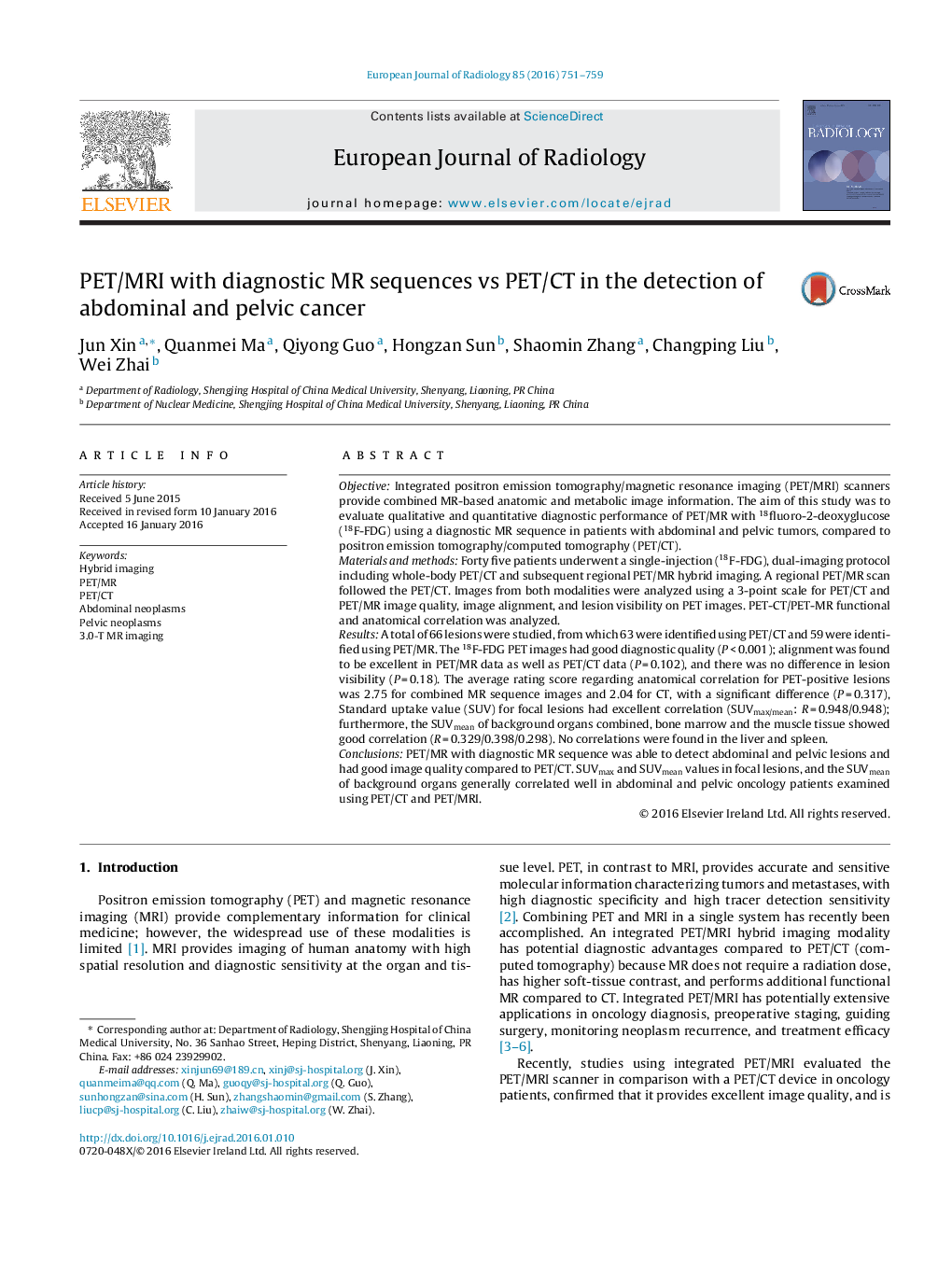| Article ID | Journal | Published Year | Pages | File Type |
|---|---|---|---|---|
| 6242979 | European Journal of Radiology | 2016 | 9 Pages |
ObjectiveIntegrated positron emission tomography/magnetic resonance imaging (PET/MRI) scanners provide combined MR-based anatomic and metabolic image information. The aim of this study was to evaluate qualitative and quantitative diagnostic performance of PET/MR with 18fluoro-2-deoxyglucose (18F-FDG) using a diagnostic MR sequence in patients with abdominal and pelvic tumors, compared to positron emission tomography/computed tomography (PET/CT).Materials and methodsForty five patients underwent a single-injection (18F-FDG), dual-imaging protocol including whole-body PET/CT and subsequent regional PET/MR hybrid imaging. A regional PET/MR scan followed the PET/CT. Images from both modalities were analyzed using a 3-point scale for PET/CT and PET/MR image quality, image alignment, and lesion visibility on PET images. PET-CT/PET-MR functional and anatomical correlation was analyzed.ResultsA total of 66 lesions were studied, from which 63 were identified using PET/CT and 59 were identified using PET/MR. The 18F-FDG PET images had good diagnostic quality (PÂ <Â 0.001); alignment was found to be excellent in PET/MR data as well as PET/CT data (PÂ =Â 0.102), and there was no difference in lesion visibility (PÂ =Â 0.18). The average rating score regarding anatomical correlation for PET-positive lesions was 2.75 for combined MR sequence images and 2.04 for CT, with a significant difference (PÂ =Â 0.317), Standard uptake value (SUV) for focal lesions had excellent correlation (SUVmax/mean: RÂ =Â 0.948/0.948); furthermore, the SUVmean of background organs combined, bone marrow and the muscle tissue showed good correlation (RÂ =Â 0.329/0.398/0.298). No correlations were found in the liver and spleen.ConclusionsPET/MR with diagnostic MR sequence was able to detect abdominal and pelvic lesions and had good image quality compared to PET/CT. SUVmax and SUVmean values in focal lesions, and the SUVmean of background organs generally correlated well in abdominal and pelvic oncology patients examined using PET/CT and PET/MRI.
